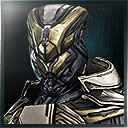| Author |
Thread Statistics | Show CCP posts - 0 post(s) |

Avallo Kantor
473
   |
Posted - 2015.03.04 22:06:00 -
[1] - Quote
Basically maps on DUST are 5km x 5km max size, with numerous points for "Sockets" to be placed.
There are small, medium, and large sockets, with some parts of the map hosting their own structures (such as the train map)
In effect, we cannot do a "full" map because:
1) It would be too big for a 16 v 16 player team to cover everything easily
2) Strain on hardware
So instead they break these 5 x 5 km maps into the maps you know and love today, with each map in game being a small part of that larger map. Because the maps are so large, there are numerous areas that could form fully made maps (with all the sockets on them) and this is what leads to the "puzzle" like structure of many maps fitting together.
When you are on Map A, Maps B, C, D, and E are 'there' on the terrain map, they just have no sockets placed on them, and are hidden behind kms of red line. |

Avallo Kantor
473
   |
Posted - 2015.03.04 22:09:00 -
[2] - Quote
Going a bit further into this concept, you may have noticed that some maps are effectively identical in location but with different buildings.
This is the socket system at work. Each socket point can hold a corresponding-sized socket, and they can be 'freely' swapped out. This gives any terrain area a number of different configurations using sockets to create new "maps" for players to play on.
The original intent was that with enough sockets / map terrains you could, for the cost of say ... 5 maps... create thousands of unique map configurations for players, giving massive variance to what maps you might play on. |

Avallo Kantor
476
   |
Posted - 2015.03.04 22:45:00 -
[3] - Quote
Lady MDK wrote:I do understand the sockets yes. But the idea of bigger maps would give some vehicles more purpose (dropships for example).
Imagine a skirmish over a larger area where you could actually capture a point then have to proceed by escorted dropship with lavs scouting to the next point. Imagine being the defender and trying to ambush the endmy while travelling. And these maps are loaded and there so its not down to hardware. Destiny does far bigger maps on the ps3 and has a basic nps ai (yes i know its an awfull game).
As the owner of a district maybe your buildings could even have jump portals to get your guys there to defend. Also longer battles to make pc and fw less like a pub match with a different reward.
Again it boils down to 2 core reasons:
1) Technical issues: Adding more sockets means more computations, and slower performance. The more sockets that are added, the worse the game gets performance wise. Some sockets (such as the Gallente Labs) are more intensive than others and can cause their own problems, especially for PC.
and
2) Countless Sandbox games have shown us that space for the sake of space often makes for poor design. Being "Large" doesn't make an experience more epic, it makes it require more movement and time to get to action. If anything, large open areas (without modifying player counts) decrease player fun, as there is less happening per area of map, and that means you are wasting resources without adding fun.
Further on this point, when factoring in point 1, you can only have these larger maps if you strip them of Sockets. This would look... bad. Unfinished. The Devs aren't going to spend extra time to make their game look -less- polished and finished, and people would be well in their right to complain.
A lot of the more successful and engaging experiences DUST has made was through the use of relatively tight battle fields, where even "long" (as in 100 meter open areas) distances were surrounded by interesting things to use for cover / ground.
A "large" battlefield might be good for a few maps (and they do exist), but creating even larger maps (even 1km by 1km ) would needlessly stretch things out with no real benefit to the players. |
| |
|